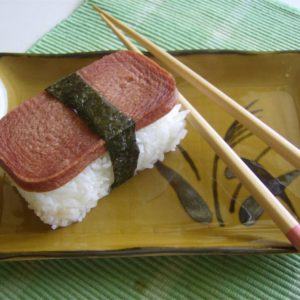Every bite of Spam Musubi takes me back to the vibrant streets of Honolulu, where I first discovered this gem. As a seasoned chef and a passionate food explorer, I’ve tweaked and re-tweaked this recipe to capture its essence. Dive in as I unfold this gastronomic journey.
Spam musubi is often associated with sushi as it uses sushi rice and nori. Nevertheless, it claims its own name and well… it is spam musubi. If you’re also associating it with Japanese, don’t worry because you have enough reason to think so. Only that, spam musubi is not a Japanese native but is hailed from the wonderful island country of Hawaii.In Hawaii, musubis are sold everywhere—in cafeterias, school canteens and convenience stores. This dish is very flexible as it can be consumed as breakfast, lunch, dinner or snack. If you want a taste of it, then this recipe is made just for you.
Homemade Musubi Maker

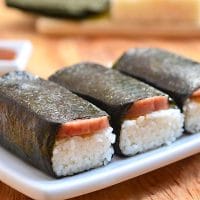
Spam Musubi
Equipment
Ingredients
Ingredients
- 1 can of Spam
- 3 cups sushi rice not cooked
- Nori sheets
- soy sauce
- sugar
- furikake or li hingmui
Instructions
- How to Make Spam Musubi

- (Note: As you can notice there are no provided measurements except for the sushi rice. This is because you have work according to your personal taste and preference.)
- Remember this ratio: every 1 can of spam is enough for every 3 cups of rice. Boil the three cups of rice and commence do the next steps.
- Open the can of Spam, get the meat and slice it into 8 equal slices.
- Incorporate soy sauce and sugar in a bowl, adjusting it to the taste you prefer.
- Fry the Spam slices in a skillet over medium-high heat.
- After a minute or two, put the soy sauce and sugar mix onto the Spam. Carefully mix the mixture with the meat and keep on frying until Spam is crisp.
- Transfer the Spam into a plate and begin the assembling.
- Cut the nori strips in half lengthwise and put inside the musubi maker.
- Scoop a generous amount of rice into the mold. Using the handle of musubi-maker, press down the rice hard. This will make the consistency of your musubi compact so it can be eaten easily.
- Layer furikake over rice and put Spam over it. Put another layer of furikake and another layer of rice over it. Press the contents again until they attain the standard firmness.
- Take the musubi off from the maker and wrap it with nori. Spam musubi is best eaten when it is freshly cooked.
Video
Notes
Nutrition
© Food And Meal
This website provides approximate nutrition information for convenience and as a courtesy only. Nutrition data is gathered primarily from the Spoonacular Database, whenever available, or otherwise other online calculators.
Making Spam Musubi Using an Oven
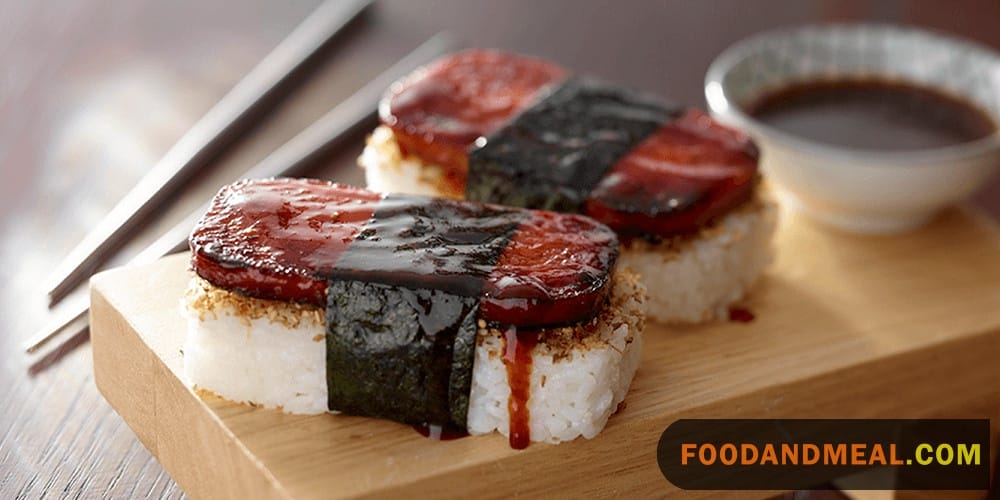
Sometimes, we crave that extra layer of crispiness on our Spam that’s hard to get on a stovetop. The oven method offers a unique take on the classic Spam Musubi. Here’s how you can recreate it:
Ingredients
Same as the original Spam Musubi recipe.
Instructions
- Rice Preparation: Begin by preparing your sushi rice as you usually would. Once cooked, season with rice vinegar, sugar, and salt. Set aside to cool, ensuring it remains a tad warm for easy molding.
- Oven-Baked Spam: Preheat your oven to 375°F (190°C). While it’s warming up, slice your Spam into 1/4-inch thick slices. Lay them out on a baking sheet lined with parchment paper or a silicone baking mat.
- Glazing: In a bowl, whisk together soy sauce, sugar, and optional mirin or sake for some additional depth. Brush this mixture generously onto the sliced Spam.
- Baking: Place the Spam slices into the preheated oven and bake for about 10-12 minutes. Halfway through, flip the slices and brush the other side with more of the glaze. Continue baking until they’re caramelized and slightly crispy on the edges.
- Assembly: Place a nori sheet on a clean surface. Using wet hands, grab a handful of rice and mold it into a rectangular shape, roughly the size of your Spam slice. Place the glazed Spam slice on top of the rice. Wrap the nori around the rice and Spam, sealing it with a few grains of rice or a dab of water.
- Serve and Enjoy: Allow them to cool slightly, then slice into desired sizes and serve with soy sauce or your favorite dipping sauce.
Chef’s Tip: The oven-baked method gives the Spam a unique crispy edge while keeping the inside tender, a delightful contrast to the soft and sticky rice. Enjoy this twist on the classic!
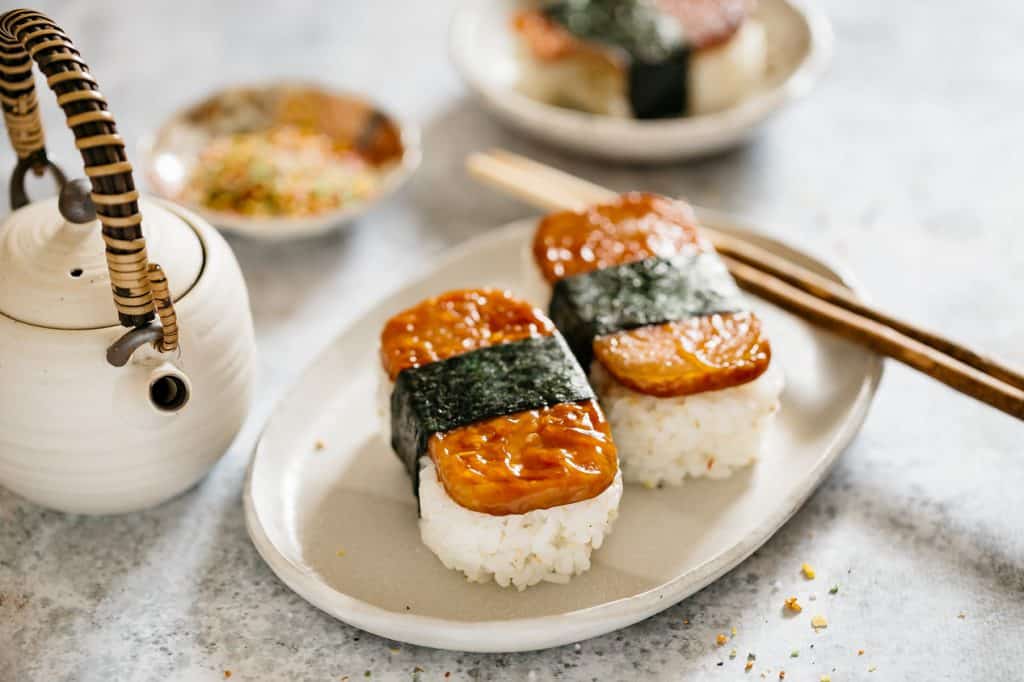
Want that perfectly sticky rice for your Spam Musubi every single time? Elevate your culinary game with a rice cooker from Japan. It’s not just a tool; it’s an experience. Get yours now and transform your Musubi-making journey!”
Tips for making Spam Musubi
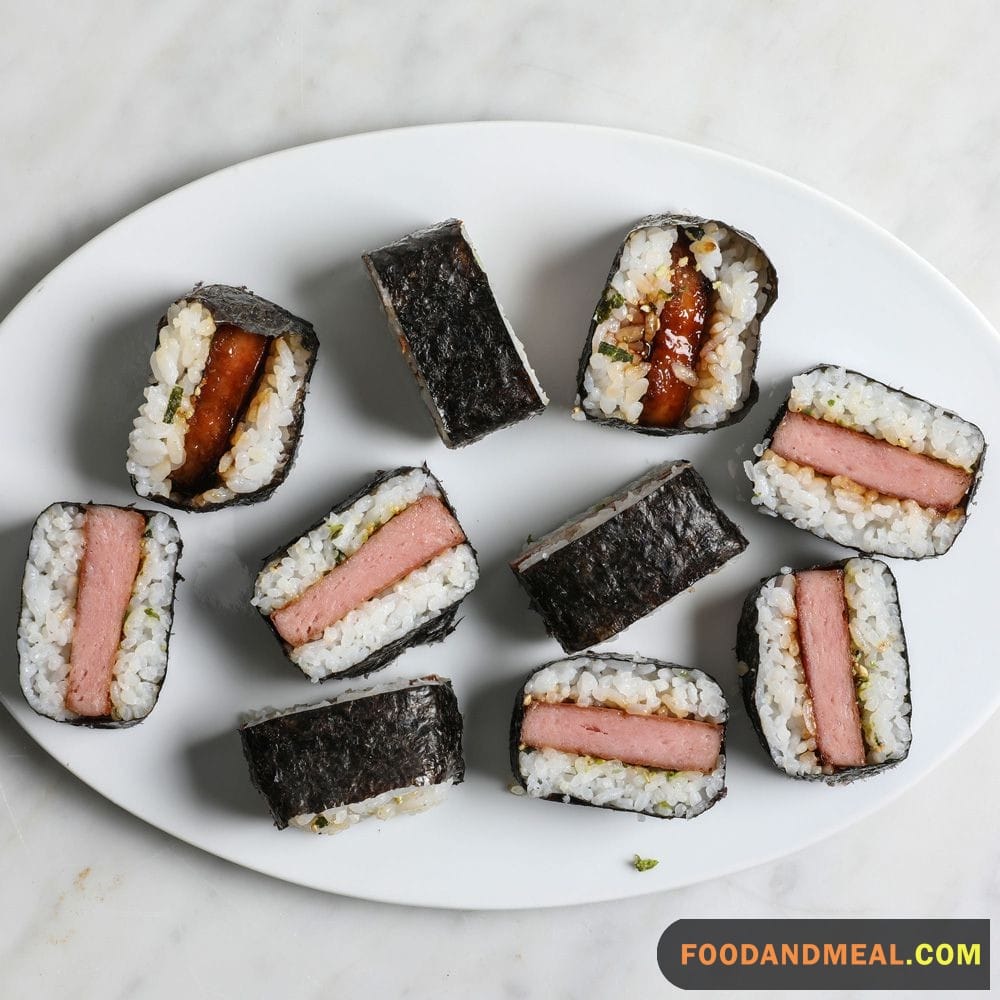
Serving Suggestions
Ah, the joy of Spam Musubi! While it’s a treat on its own, complementing it with the right side or drink can elevate the entire eating experience.
- Sides: A light cucumber salad or sunomono works wonders. The refreshing crunch contrasts beautifully with the dense musubi.
- Garnishes: Consider sprinkling some furikake (Japanese rice seasoning) or sesame seeds over the musubi for an extra burst of flavor and texture.
- Beverages: Green tea, either iced or hot, pairs splendidly. Its slightly bitter undertones cleanse the palate after the savory richness of the Spam.
- Alternate Serving Style: Ever thought of Spam Musubi sushi rolls? Use the Spam as a filling and roll as you would a sushi roll. Slice, serve, and watch them disappear!
FAQs on Spam Musubi
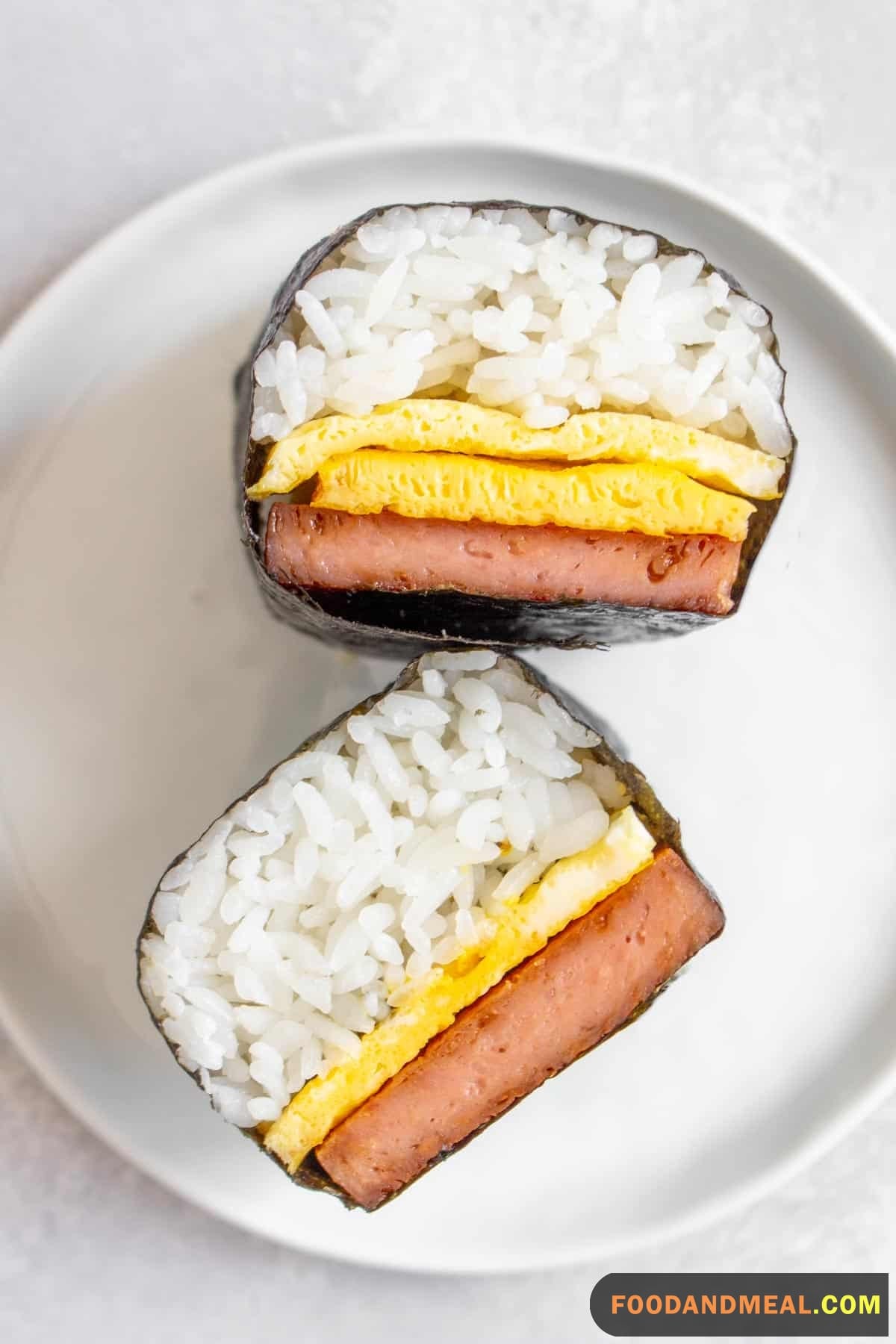
Can I use brown rice instead of white sushi rice?
Absolutely! Brown rice offers a nuttier flavor and a chewier texture. Just ensure it’s sticky enough to hold the musubi together.
What can I use if I don’t have a musubi press?
No worries! An empty Spam can, with both ends removed, makes an excellent makeshift musubi press.
How long does Spam Musubi last in the fridge?
Stored in an airtight container, it’ll last for about 2-3 days. However, for the best texture and flavor, consume it within a day.
Is there a vegetarian version of Spam Musubi?
Indeed, there is! Replace the Spam with firm tofu slices that have been marinated and then pan-fried or oven-baked.
How should I store leftover Spam Musubi?
Place the leftovers in an airtight container. If you’re consuming them within hours, room temperature is fine. Otherwise, refrigerate and slightly reheat before eating.
Cooking Tips to Master Spam Musubi
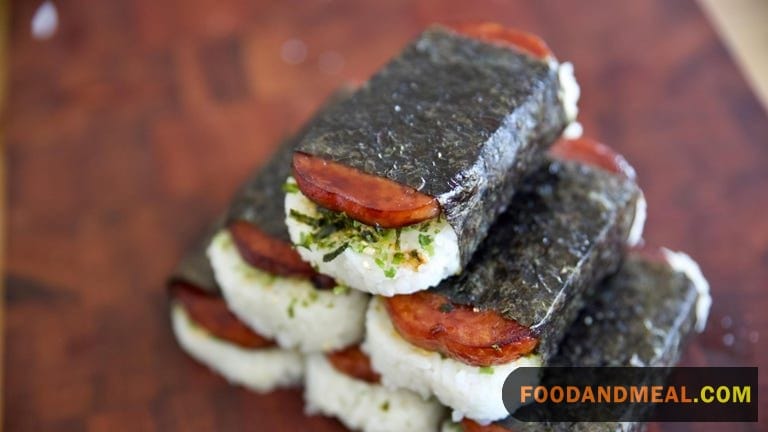
Getting Spam Musubi just right is an art, and like all arts, it has its secrets. Here are some tips and pitfalls to steer clear of:
- Rice Consistency: The rice shouldn’t be too dry or too wet. It needs to be just sticky enough to hold its shape without being a gloopy mess.
- Seasoning Balance: Be mindful of your soy sauce-sugar glaze. Too much sugar can make it overly sweet, overshadowing the Spam’s savory notes.
- Nori Freshness: Ensure your nori (seaweed sheets) is crisp. Store them in a cool, dry place and use them soon after opening. Chewy nori is a no-go!
- Layering: While layering the Spam on the rice, don’t press too hard. Gentle pressure ensures a soft bite every time.
- Avoid Sogginess: If you’re adding any sauces or mayo, do so just before eating. This ensures the musubi remains crisp and doesn’t turn soggy.
Our Spam Musubi recipe captures the heart and soul of this Hawaiian favorite. Every bite transports you to island paradise. Enjoyed the journey? Share it with fellow food enthusiasts and subscribe FoodAndMeal for more of our gourmet adventures!
Experience the culinary brilliance of Chef John at Food And Meal Restaurant. With over 20 years of global expertise, My innovative creations and unwavering dedication to cooking have earned me a well-deserved reputation. My passion for gastronomy is showcased in every dish, combining fresh, local ingredients with harmonious flavors and captivating presentations. My ability to tell a story through my food reflects my profound understanding of culture and emotion.


